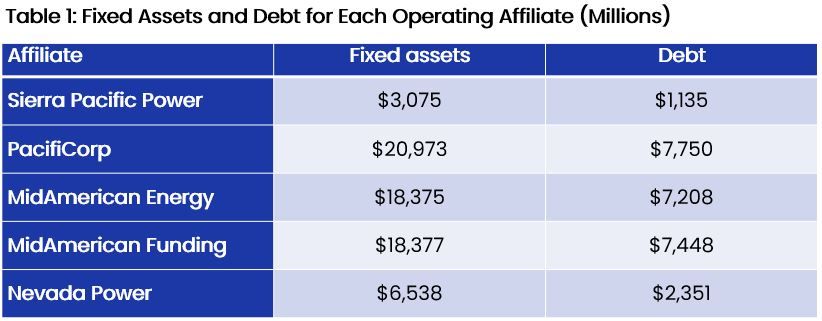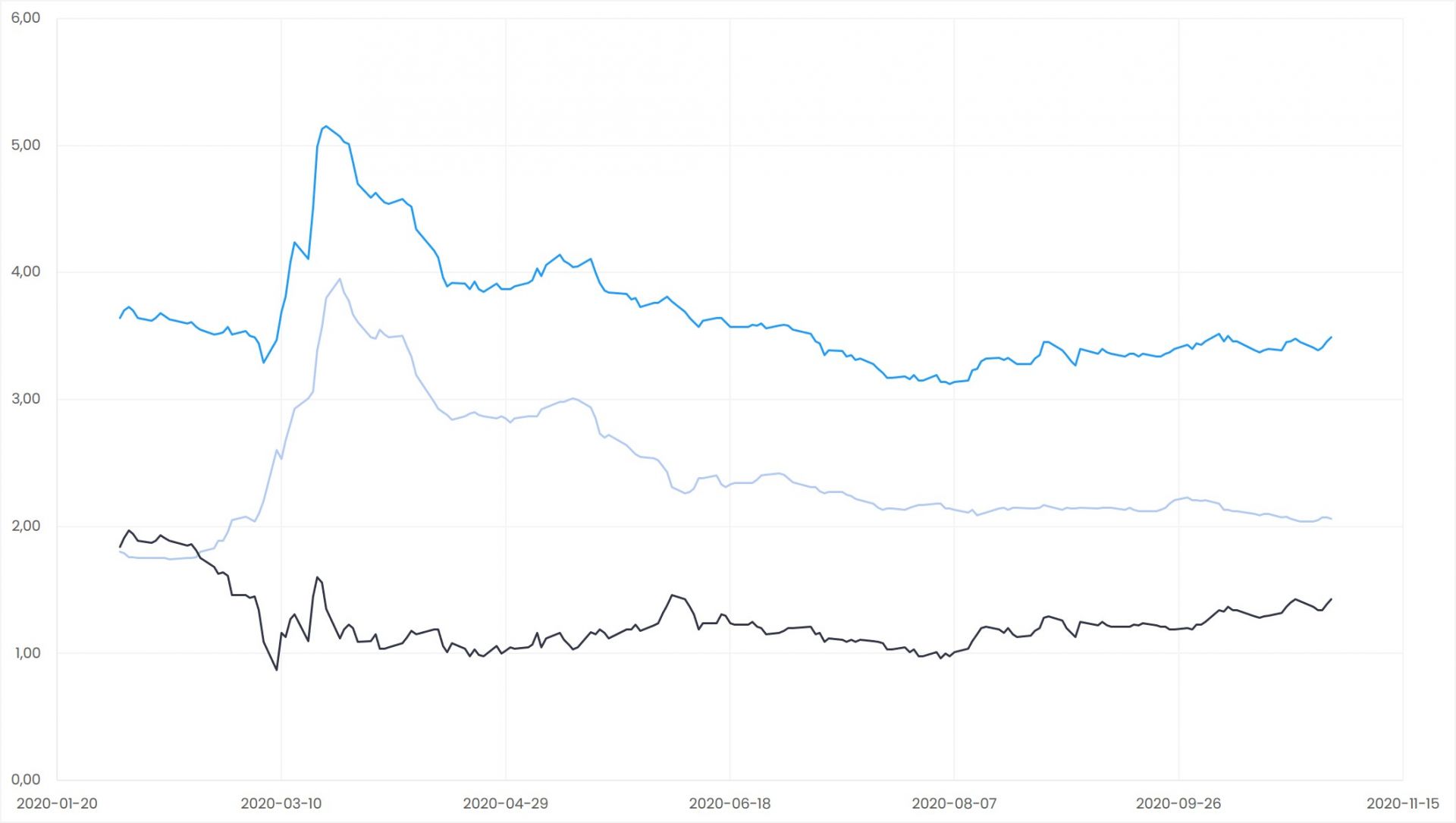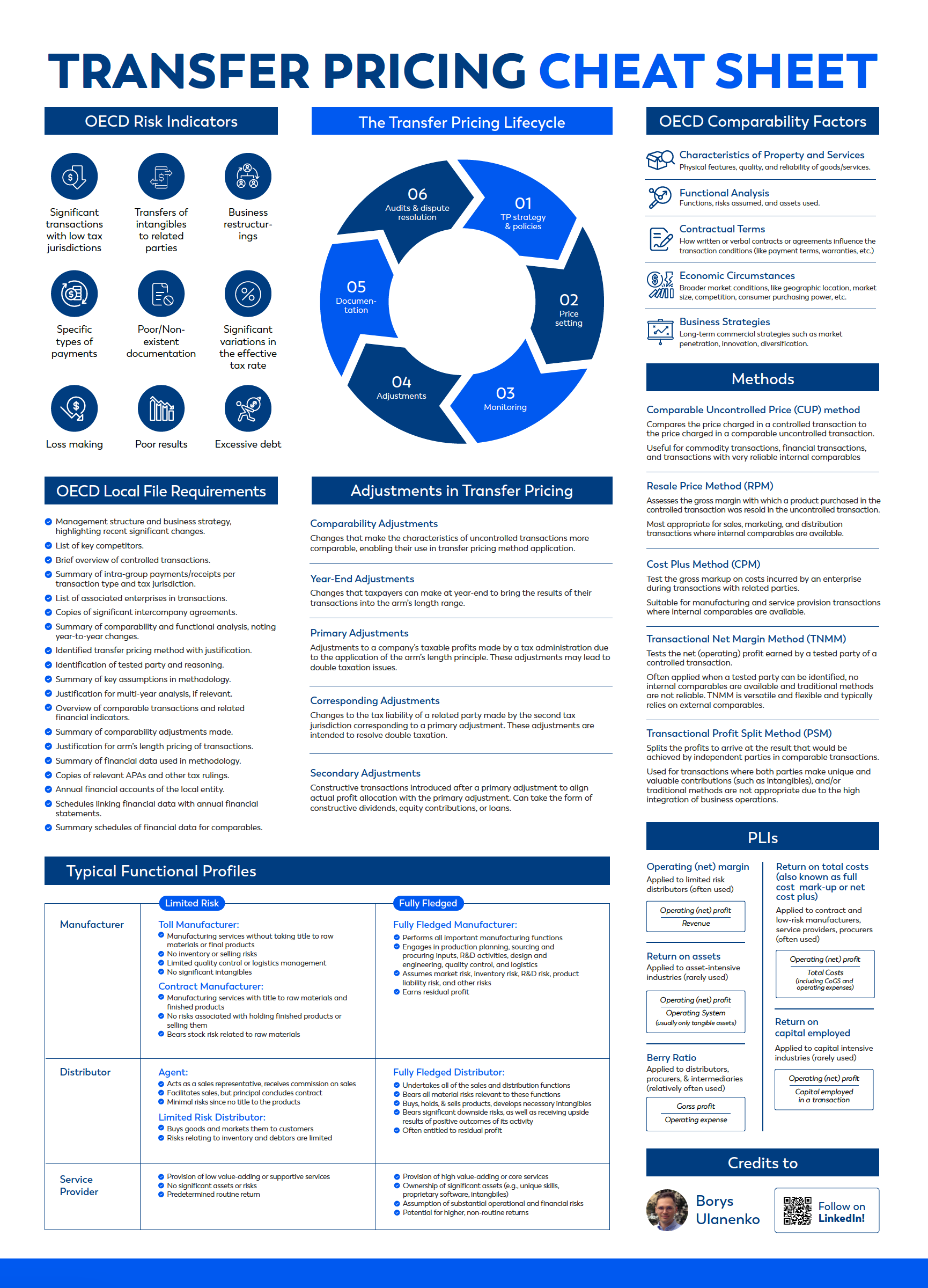Intercompany Loans for State Purposes: Two Illustrations of Debt Push Downs and Pricing
Harold McClure
The
November 2020 DHG webinar entitled “Overview and Considerations for Domestic
Transfer Pricing” considered various tax planning strategies including debt
push downs. Consider a holding company such as Berkshire Hathaway Energy that
incurs third party debt on behalf of its operating affiliates. The holding
company incurs interest expenses, while the operating profits are booked by the
operating affiliates. The debt push down strategy allocates the interest
expense to the operating affiliates.
We illustrate this
strategy as well as the pricing issues for the evaluation of arm’s length
interest rates using both recent financing for Berkshire Hathaway Energy and
the financing of how Amazon acquired Whole Foods.
I. Berkshire Hathaway
Energy
Berkshire Hathaway Energy is a holding company with the following
operating affiliates: PacifiCorp, MidAmerican Energy, MidAmerican Funding,
Nevada Power, and Sierra Pacific. These operating affiliates are regulated
utilities providing energy such as electricity to their customers. These
operating affiliates collectively own approximately $70 billion in fixed
assets, which are financed with over $25 billion in third party debt. Table 1
shows the fixed assets and debt allocated to these operating affiliates as of
December 31, 2019.

Between May 24, 2020 and October 29, 2020,
Berkshire Hathaway Energy issues $5.25 billion in corporate bonds on various
dates and various terms to maturity. Table 2 summarizes these corporate bond
offerings including the interest rate. While the credit ratings for each
operating affiliate were A, the interest rates on the debt issued in late March
were quite high relative to the corresponding government bond (GB) rate.

A standard model for
evaluating whether an intercompany interest rate is arm's-length can be seen to
have two components — the intercompany contract and the credit rating of the
related party borrower. Properly articulated intercompany contracts stipulate:
· The date of the loan;
·
The currency of denomination;
· The term of the loan; and
· The interest rate.
The
first three items allow the analyst to determine the market interest rate of
the corresponding government bond. This intercompany interest rate minus the
market interest rate of the corresponding government bond can be seen as the
credit spread implied by the intercompany loan contract.
Table
2 calculates the credit spread on each of these corporate bond offerings. Credit
ratings are letter grades, which require translating into a numerical credit
spread. The fallout from the COVID-19 crisis includes volatile credit spreads
almost reaching what we witnessed after the collapse of Lehman Brothers in the
fall of 2008.
I discussed the spike
in credit spreads during the period after the COVID-19 became evident.[1]
These discussions focused on the difference between the interest rate on
long-term corporate bonds rated BBB and the interest rate on 20-government
bonds. The following figure shows these interest rates and the implied credit
spread from February 3, 2020 to October 30, 2020.

While
the interest rate on long-term government bonds fell from 1.8 percent in early
February to around 1 percent after the recognition of the COVID-19 crisis,
interest rates on long-term corporate debt rose from around 3.6 percent to
around 5 percent. The credit spread on corporate debt rated BBB spiked from around
1.8 percent in early February to near 4 percent as of March 23. This spike in
the credit spread moderated over the rest of 2020 was only 2 percent by the end
of October.
Miguel
Faria-e-Castro, Julian Kozlowski, and Mahdi Ebsim noted this spike in credit
spreads.[2]
The rise in observed credit spreads began on February 28 and peaked on March
23, which was the date that the Federal Reserved announced measures to stem
this financial crisis. These authors cited evidence on credit spreads for
corporate bonds with credit rating A- and better, corporate bonds with credit
ratings between BBB and BB-, and corporate bonds with credit rating B+ and
below. The credit spreads shown in table 2 are consistent with their evidence
on credit spreads for corporate bonds with credit ratings A- and higher.
II. Amazon Acquisition of Whole
Foods
Amazon
purchased Whole Foods during the summer of 2017 for $13.7 billion. This
purchase price represented a premium over the market value of Whole Foods at
the time of the acquisition and was almost twice the book value of Whole Food’s
assets.
Amazon
also issued $16 billion in corporate bonds on August 22, 2017. Table 3 shows
the key terms of these corporate bond issuances as well as the corresponding
government bond rate for the various terms to maturity. The credit spreads for
these corporate bonds were consistent with a credit rating of A. Some
commentators were surprised that Amazon paid higher credit spreads than other
high technology companies such as Apple. We should note that not all high
technology companies are alike as Apple’s operating margins then to be several
multiples of Amazon’s operating margins.

At
the time of the acquisition Whole Foods had $1 billion in long-term debt from a
corporate bond issuance on December 3, 2015. The terms of this corporate bond
issuance is also shown in table 3 along with the interest rate on 10-year
government bonds on that date. The credit spread was 2.87 percent, which was
consistent with Whole Food’s BB+ credit rating.
If
Amazon wished to push down some of this new financing as of August 22, 2017,
two questions exist. One is how much debt could be pushed down in the form of
intercompany loans from Amazon to its new Whole Foods operating affiliate?
Amazon would not likely prevail in pushing down all $16 billion in debt but an
intercompany loan equal to $1 billion would be reasonable if not conservative.
The
other question is what should be the intercompany interest rate. Table 4
considers a 10-year intercompany loan of $1 billion issued on August 22, 2017
with three possible interest rates. Which interest rate represents the arm’s
length standard depends on how one views the credit rating for the operating
affiliate. If Amazon’s group rating of A is used for the analysis, then the
arm’s length interest rate is the 3.15 percent third party rate paid by Amazon
on the same date for the same term to maturity.
If
Whole Food’s standalone credit rating of BB+ was seen as appropriate, then the
December 3, 2015 third party loan might be seen as the appropriate comparable
with one comparability caveat. Interest rates were slightly lower as of August
22, 2017 than they were as of December 3, 2015. Table 4 suggests that a 5
percent interest is consistent with a BB+ standalone credit rating.

Recent court decisions in other nations have
suggest an intermediate position between using the group credit rating versus
the stand alone credit rating. When the parent has a better credit rating than
the borrowing affiliate, the implicit support controversy suggests that the
appropriate credit rating be seen as stronger than the standalone credit rating
but not as strong as the group rating. If the appropriate credit rating were
BBB, then a credit spread near 2 percent would be appropriate. Table 4 reflects
this intermediate view as a 4.25 percent intercompany interest rate under the
arm’s length standard.
III. Concluding Remarks
We illustrated certain issues
that require addressing in any intercompany debt push down tax planning. The
first question is how much of the holding affiliate’s third party debt should
be allocated to any particular operating affiliate. The OECD’s Action 4 of the
Base Erosion and Profit Shifting effects on “Limitations of Interest
Deductions” offers guidance which state tax authorities might consider.
The other issue involves the
appropriate intercompany interest rate under the arm’s length model. We have
offered an economic approach consistent with the OECD’s recent “Transfer Pricing Guidance on Financial Transactions”. Our economic
approach focuses on the terms of the intercompany agreement (date of loan and term
to maturity) and the credit rating of the borrowing affiliates.
To contact the author of the post, click here.
_________________________________________________
[1] “Calculating Credit Spreads During A Pandemic”, LAW 360, April 27, 2020; “Translating Credit Ratings into Credit Spreads in Intercompany Financing, RoyaltyStat Blog.
[2] "Corporate Bond Spreads and the Pandemic," On the Economy Blog, April 9, 2020.
[1] “Calculating Credit Spreads During A Pandemic”, LAW 360, April 27, 2020; “Translating Credit Ratings into Credit Spreads in Intercompany Financing, RoyaltyStat Blog.
[2] "Corporate Bond Spreads and the Pandemic," On the Economy Blog, April 9, 2020.
For more details about the textbook and the course, contact us:

We are an online educational platform that helps professionals and aspiring individuals to succeed in their goals.
Featured links
Get your free TP cheat sheet!
Discover the essential concepts of TP in one concise, easy-to-follow cheat sheet.

Thank you! Download here.
What is the EU Directive?
The EU is run by an elected EU Parliament and an appointed European Council. The European Parliament approves EU law, which is implemented through EU Directives drafted by the Commission. National governments are then responsible for implementing the Directive into their national laws. In other words, EU Directives are draft laws that then get passed by national governments and then implemented by institutions within the member states.
What is CbCR?
Country-by-Country Reporting (CbCR) is part of mandatory tax reporting for large multinationals. MNEs with combined revenue of 750 million euros (or more) have to provide an annual return called the CbC report, which breaks down key elements of the financial statements by jurisdiction. A CbC report provides local tax authorities visibility to revenue, income, tax paid and accrued, employment, capital, retained earnings, tangible assets and activities. CbCR was implemented in 2016 globally.
